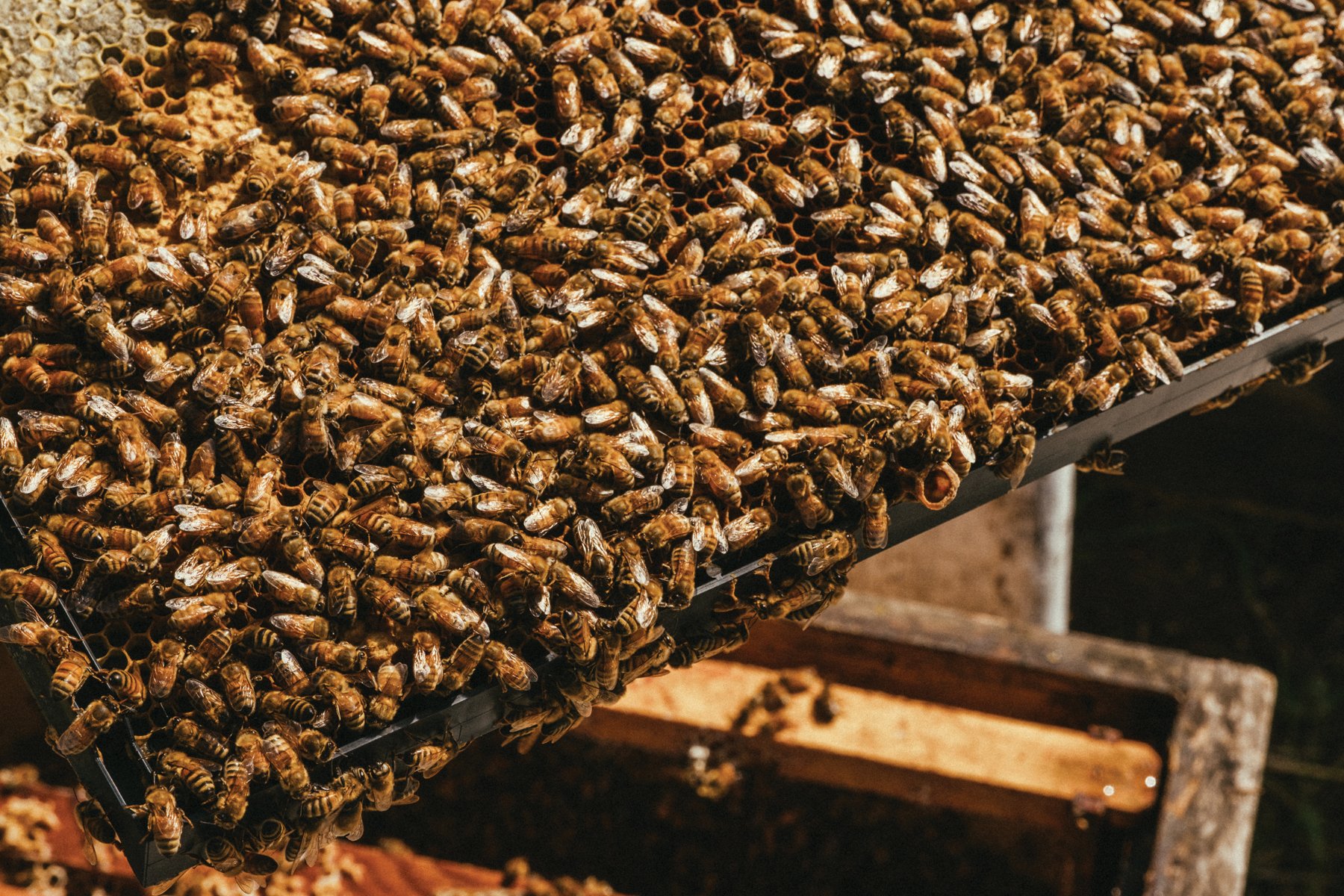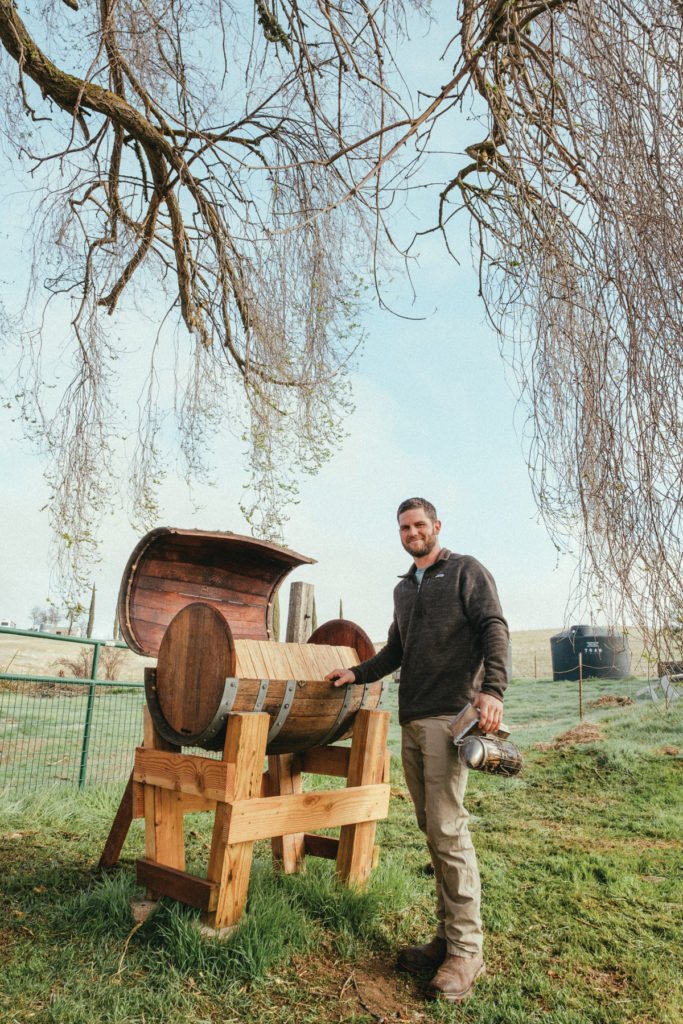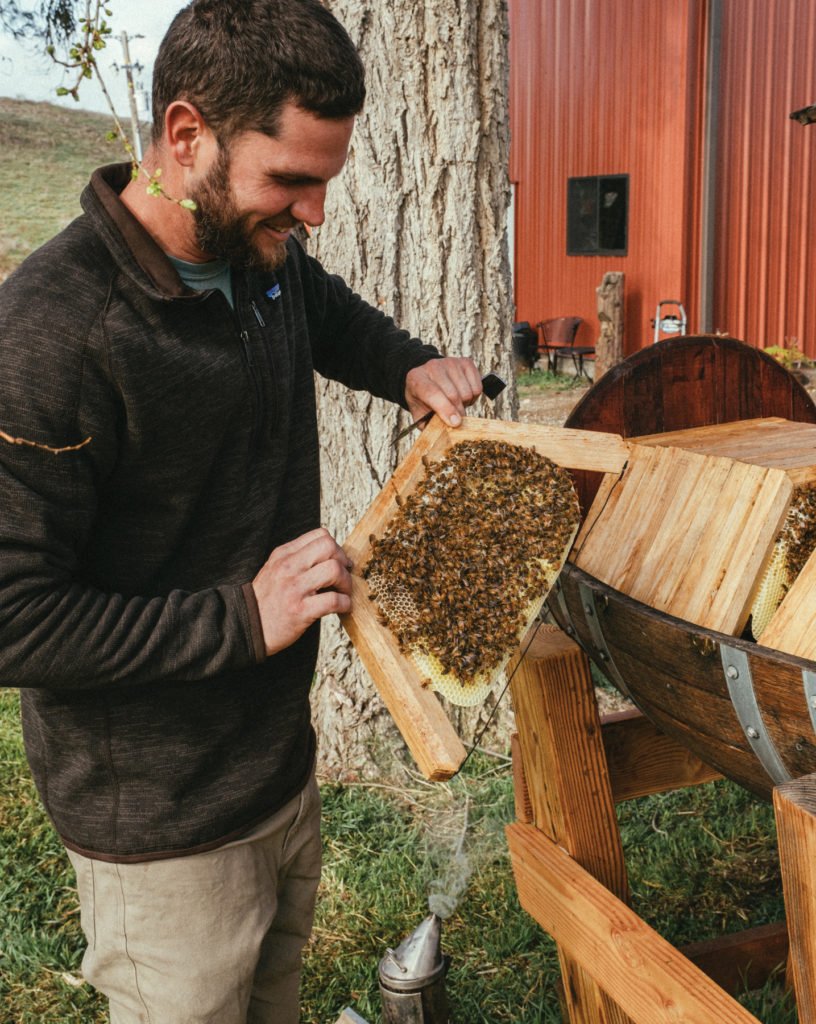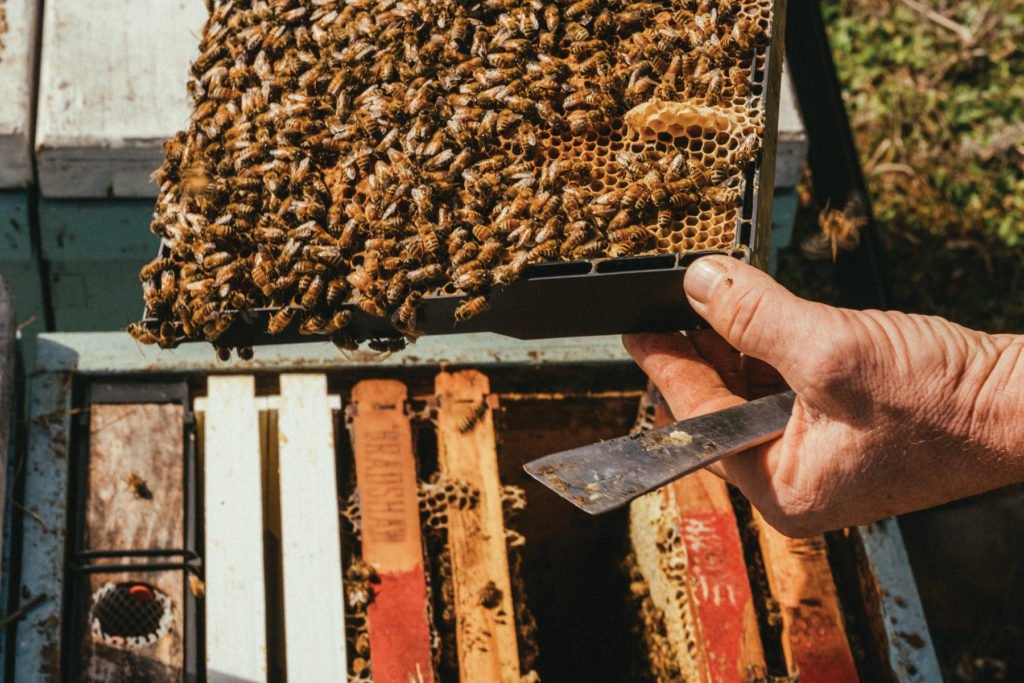
The Nectar that Nourishes
Photography by Richard Fusillo
So influential in American culture is honey that it’s migrated into our lexicon, diets and entertainment. You may ask your honeybunch to take care of the “honey-do” list. A poem or greeting card might be dripping with “honeyed prose.” Get introspective while listening to “Tupelo Honey” by Van Morrison or sing along to the “Mamma Mia”/ABBA confection, “Honey Honey.” If you’re of a certain vintage, binge-watch Anne Francis as the sexy sleuth Honey West, on DVD.
As we finally welcome the summer months, blooming plants and flowers attract busy bees that collect the nectar and pollen, then carry it home to their hives. Through a magical digestive process, the bees ferment their forage into “bee bread,” which nourishes young bees. The final product, honey, is liquid gold for humans, too. San Luis Obispo-based California Bee Company produces artichoke blossom honey and honeycomb chunk for food and drink enhancements. The antibacterial properties of honey lead down a healing path to a wide range of ingestibles and topicals, for use as a poultice for an infected wound or to clear up skin irritations. Life Elements in Atascadero taps into honey’s medicinal properties, transforming it into a salve for dry skin and pain relief, sugar scrubs and lip balms.
California’s Central Coast is a hive of beekeeping and honey production, with swarms of amateur and professional beekeepers living and farming here. “You could confidently say the county has at minimum, 25–75 million bees,” says Martha Van Inwegen, founder of Life Elements.
The type of nectar a bee snacks on is very important to the flavor and color of the honey. Bees will forage up to five miles from their hives. Well-seasoned beekeepers like Thomas McCall, a third-generation honey producer at Sierra Honey Farm in Paso Robles, make sure their hives are located in pristine, far-flung fields where there’s an abundance of blooms, say, buckwheat in San Ardo, or avocados in Arroyo Grande. The aroma and essence of the blooms lend each type of honey its distinctive character. Thomas’ one-man cultivation process is highly labor intensive but results in honey that truly tastes of the specific botanicals surrounding his hive boxes.


Thomas tells me, “Bees will eat whatever is bright and colorful.” Thus hives should not be placed close to mainstream agriculture where bees could ingest pesticides and fungicides. In one case, the mystery of a bright red honey harvest in New York City was explained when it was discovered that bees were feasting on red dye from a nearby food plant. Conscientious beekeepers like Thomas keep their bees away from any plants or chemicals that would interfere with their making exquisite honey. Pristine and pastoral are the operative terms when siting hives, but there is far more than an optimal location to successful beekeeping.
Managing the hives is an art form. Bees make honey for themselves in order to survive the months where no nectar or pollen is available. Beekeepers must not harvest so much honey that the bees don’t have enough left for the winter. During the colder months, when honey is not harvested, beekeepers sparingly supplement bees’ own honey with sugar water. Once spring comes along, sugar water is not given and the honey harvest can begin.

Queen bees are temperamental, but crucially important. Colony dieback is a real problem with multiple causes, from pests to lack of rain to chemicals to lack of diversity in nearby plants and flowers. The lack of nectar- and pollen-bearing blossoms on grape vines means vineyard-covered hills and fields are not ideal foraging ground for bees. Yet eucalyptus trees in bloom drip with nectar, and almonds make for rich foraging. Fruit trees are a slice of heaven for bees.
Once the honey is harvested, it delights sweet tooths and savory tooths alike. Drizzle some on a buttermilk biscuit. Add a tablespoon to a salad dressing with some mustard. Andrew Jones of Field Recordings in Paso Robles makes a sparkling mead from Los Osos wildflower/poison oak honey that’s fermented with alcohol and a little yeast to encourage the bubbles. If your last mead-quaffing took place at a renaissance faire, you’re in for a special surprise. The buzzy cocktail below will have you singing “A Taste of Honey” along with Herb Alpert & the Tijuana Brass.

